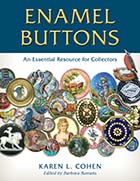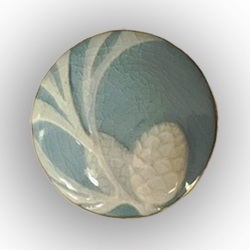

A book is never without any errors no matter how hard it was reviewed. Here are the errors I have found with their corrections. Please mark your copy. These are listed in page order, not by when they are found
Table of Contents
| Page 44 | ETT on Engine Turning and Guilloché The information says engine turning machines are no longer manufactured. But Tres Linnep, an ornamental turner, just told me that Lindow Machine Works created a rose engine that will do Guilloché work and they have a straight line attachment to do straight-line work. This was bought out by Columbus Machine Works for manufacture. Thus, at least the Rose engine and Straight-line machines can be made today but the Brocade machine is not. I just found out that figure 3.5 is of a Rose Engine but set up with a high speed spindel and not a graver. If I get the corrected photo, I will post it here. This is more to this story... apparently some digital machines are now doing work that is exactly like the older hand machines. Thus it is not clear if these new outputs would be called Guilloché or something else. This is left for further study. Any information I obtain I will post here. Also about Guilloché - in the book I make the distinction between an engine turned pattern (no enamel) with Guilloché (turned pattern with enamel). Some engine turners I've talked with now say they make no such distinction. But enamelists do make this distinction. Want to know more about engine turning... here is an organization for turners - Plumier Foundation. |
||||
| Page 112 | Pâte sur Pâte
I say "may not be" because in 1880, Dr. Heintze at the German company Meissen perfected the technique of Pâte sur Pâte while adding color. Thus, the crane shown as button #516 could be a colored version. In speaking with a retired curator of ceramics from a US museum, she said it would be difficult to tell, even upon inspection, the actual technique. This is not an enamel issue and is thus left for further study by those interested in ceramic buttons. The acorn button shown here is the normal look of Pâte sur Pâte. Note that another term for Pâte sur Pâte is Pâte d'Application. |
||||
| Page 119 | The checklist (update 2) has been updated with new makers and other additions to the world of enamel buttons. This is a .pdf file that can be printed from the web or downloaded to your device.
|
||||
|
|
Index entry for "high-fire techniques" should be:
|
last updated
05/16/2025
 In the section about Porcelain, it shows what used to always be considered a Pâte sur Pâte button (#516). However, based on further research by the Classification committee and myself, it has been determined that the button shown may not be Pâte sur Pâte. See articles: NBB March 1952 pgs 74-76, and The Big Book of Buttons, 2nd edition, page 27, under Ceramics, Plate 5, under #25.
In the section about Porcelain, it shows what used to always be considered a Pâte sur Pâte button (#516). However, based on further research by the Classification committee and myself, it has been determined that the button shown may not be Pâte sur Pâte. See articles: NBB March 1952 pgs 74-76, and The Big Book of Buttons, 2nd edition, page 27, under Ceramics, Plate 5, under #25. 